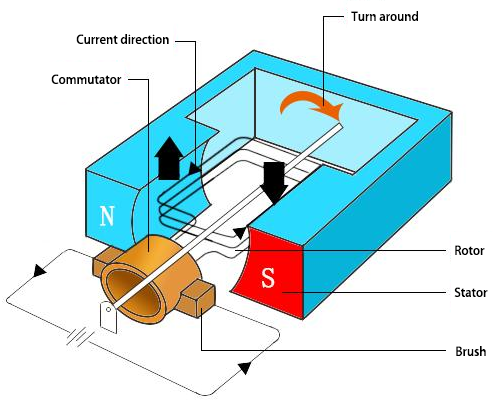Note
Hello, welcome to the SunFounder Raspberry Pi & Arduino & ESP32 Enthusiasts Community on Facebook! Dive deeper into Raspberry Pi, Arduino, and ESP32 with fellow enthusiasts.
Why Join?
Expert Support: Solve post-sale issues and technical challenges with help from our community and team.
Learn & Share: Exchange tips and tutorials to enhance your skills.
Exclusive Previews: Get early access to new product announcements and sneak peeks.
Special Discounts: Enjoy exclusive discounts on our newest products.
Festive Promotions and Giveaways: Take part in giveaways and holiday promotions.
👉 Ready to explore and create with us? Click [here] and join today!
DC Motor¶

This is a 3V DC motor. When you give a high level and a low level to each of the 2 terminals, it will rotate.
Size: 25*20*15MM
Operation Voltage: 1-6V
Free-run Current (3V): 70m
A Free-run Speed (3V): 13000RPM
Stall Current (3V): 800mA
Shaft Diameter: 2mm
Direct current (DC) motor is a continuous actuator that converts electrical energy into mechanical energy. DC motors make rotary pumps, fans, compressors, impellers, and other devices work by producing continuous angular rotation.
A DC motor consists of two parts, the fixed part of the motor called the stator and the internal part of the motor called the rotor (or armature of a DC motor) that rotates to produce motion. The key to generating motion is to position the armature within the magnetic field of the permanent magnet (whose field extends from the north pole to the south pole). The interaction of the magnetic field and the moving charged particles (the current-carrying wire generates the magnetic field) produces the torque that rotates the armature.

Current flows from the positive terminal of the battery through the circuit, through the copper brushes to the commutator, and then to the armature. But because of the two gaps in the commutator, this flow reverses halfway through each complete rotation. This continuous reversal essentially converts the DC power from the battery to AC, allowing the armature to experience torque in the right direction at the right time to maintain rotation.
Example
1.3.1 Motor (C Project)
3.1.4 Smart Fan (C Project)
1.3.1 Motor (Python Project)
4.1.10 Smart Fan (Python Project)
1.17 Rotating fan (Scratch Project)